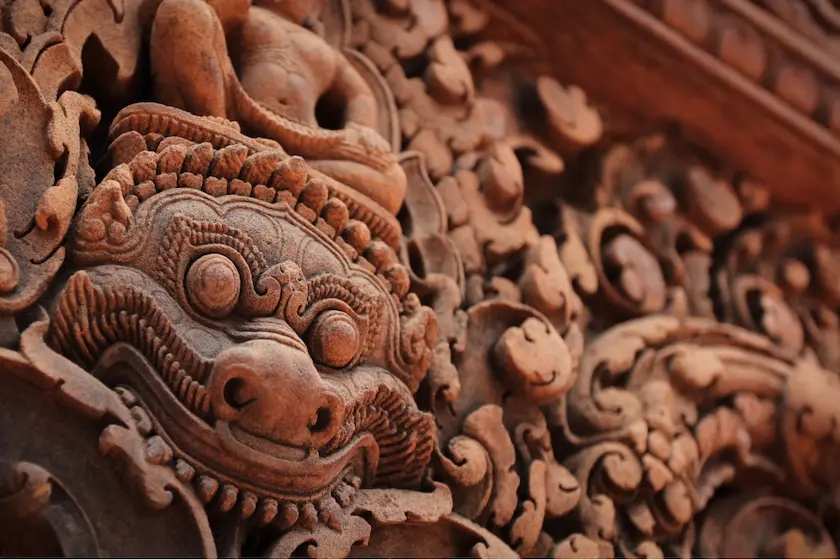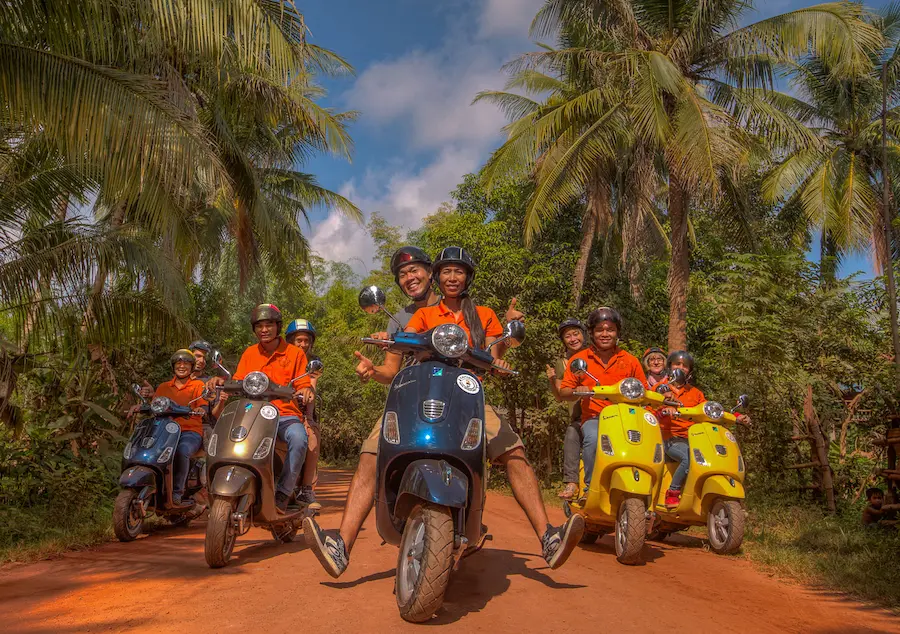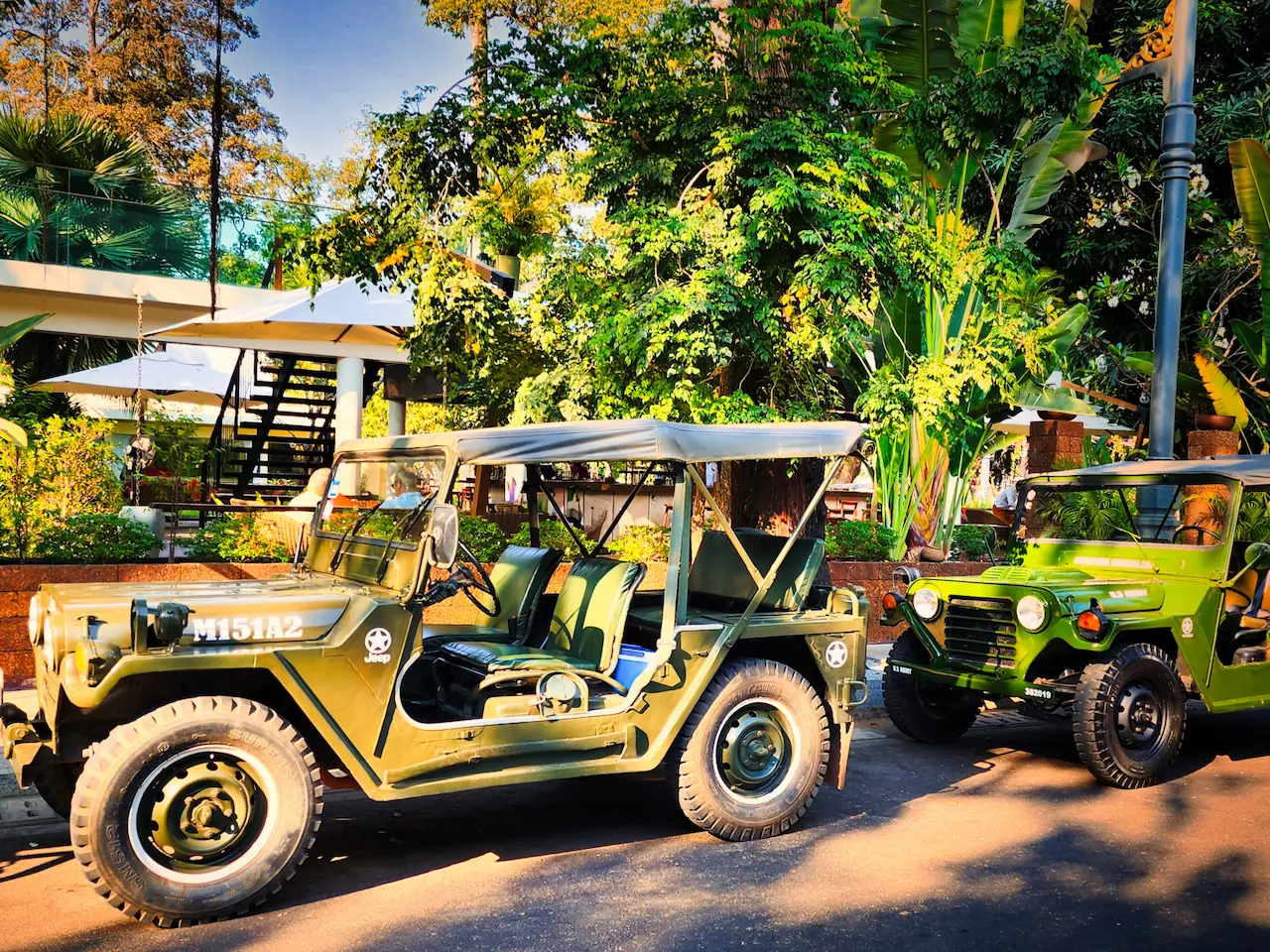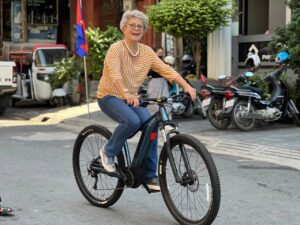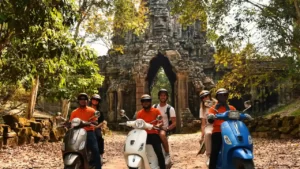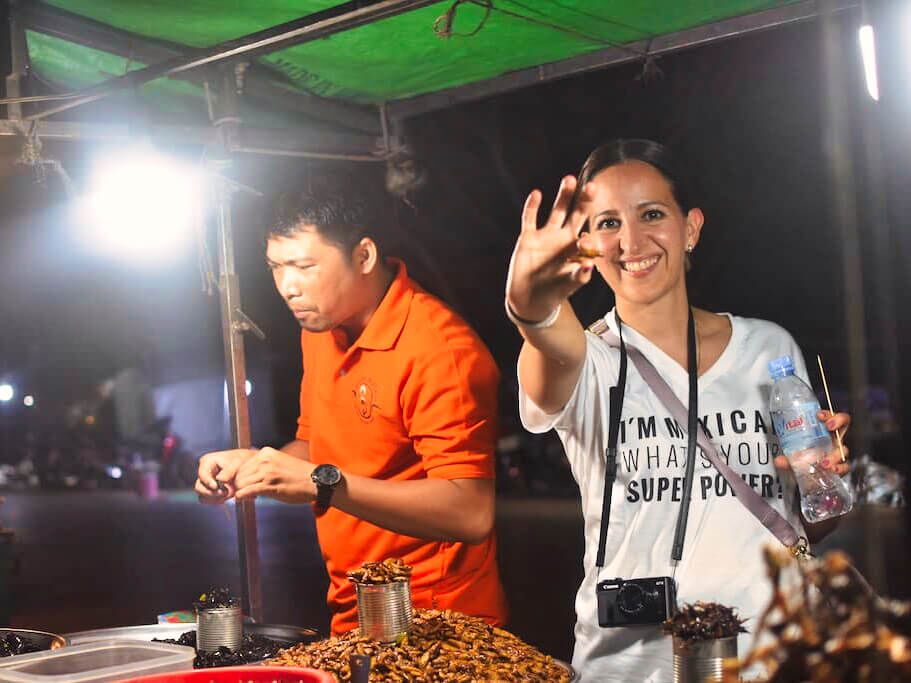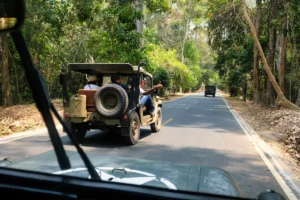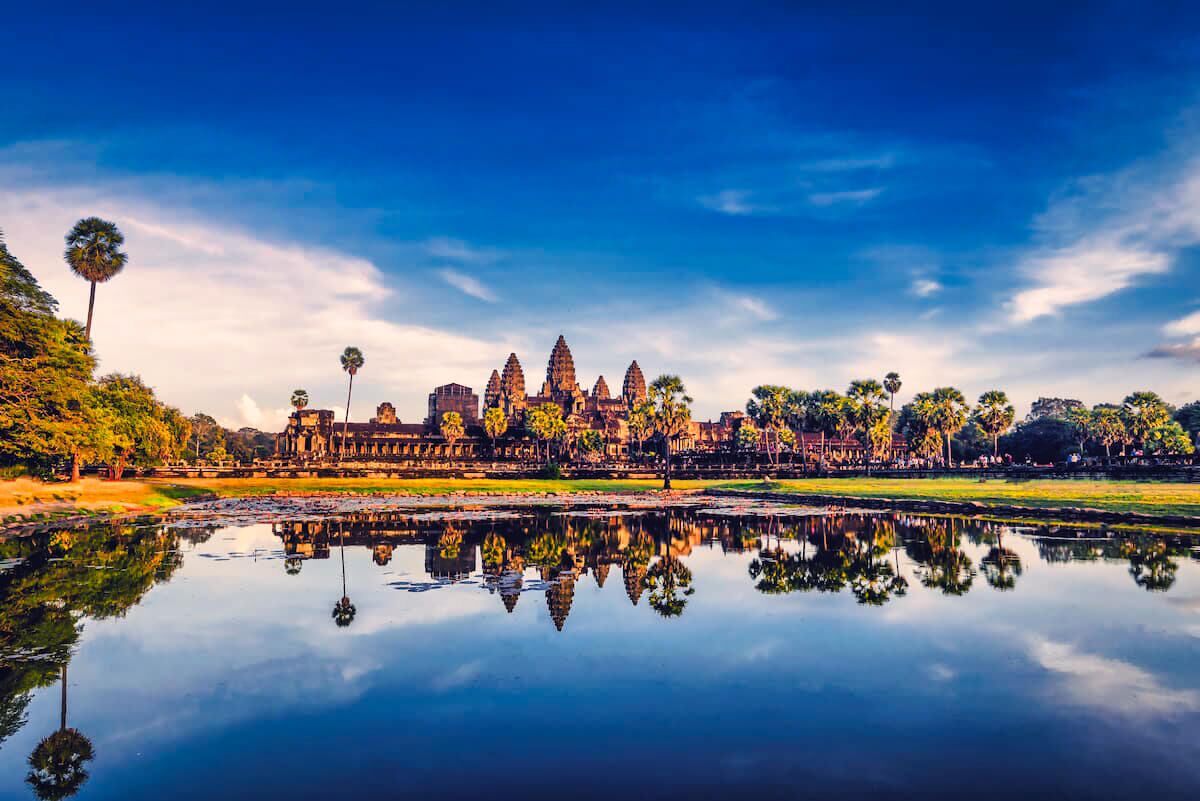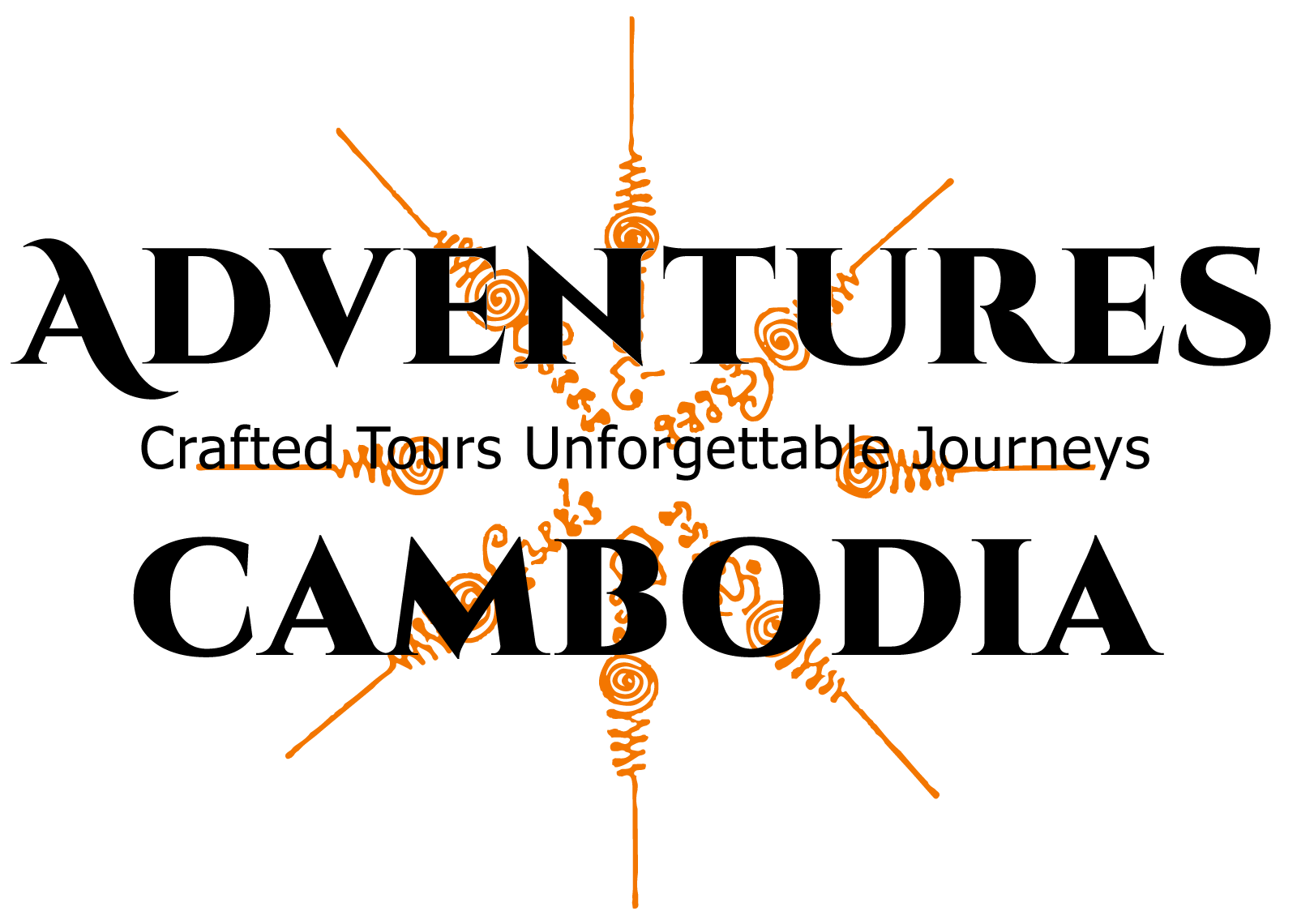Contexte historique et culturel
Angkor, autrefois capitale éblouissante de l'Empire khmer, raconte l'histoire de l'une des civilisations les plus remarquables d'Asie du Sud-Est. Du 9ème au 15ème siècle, elle est devenue la plus grande ville préindustrielle du monde, avec plus d'un million d'habitants et s'étendant sur plus de 400 km².
Au cœur de tout cela se trouve Angkor Vat, construit au début du 12ème siècle par le roi Suryavarman II. D'abord dédié au dieu hindou Vishnu, le temple est ensuite devenu un centre important du bouddhisme. Sa grandeur, tant par sa taille que par ses détails, reflète une vision du monde sophistiquée ancrée dans la cosmologie hindoue, où les temples symbolisent l'univers.
Le déclin d'Angkor, vers 1431, a été progressif. Les historiens mentionnent plusieurs causes: dégradation écologique, invasions venues du Siam (l'actuelle Thaïlande), et déplacement des routes commerciales vers les zones côtières. Peu à peu, la jungle a recouvert les temples, mais Angkor n'a jamais disparu des mémoires.
Au 19ème siècle, des explorateurs français redécouvrent le site, suscitant un intérêt mondial. Les travaux de restauration du 20ème siècle ont permis de préserver ces joyaux, aujourd'hui classés au patrimoine mondial de l'UNESCO et parmi les sites archéologiques les plus visités au monde.
Mais Angkor ne se résume pas à des ruines. Des temples comme Angkor Thom, avec ses portes monumentales et les visages énigmatiques du Bayon, témoignent d'une profondeur spirituelle et d'une complexité politique toujours présentes. Les traditions khmères perdurent à travers des fêtes comme le Nouvel An khmer, célébré chaque avril avec des batailles d'eau joyeuses, des jeux traditionnels et des réunions familiales. Une preuve que ce monde ancien est encore bien vivant.
Temples incontournables : points forts et descriptions
Angkor Vat
Joyau de la couronne d'Angkor et plus grand monument religieux au monde, Angkor Vat impressionne par son ampleur et la finesse de ses détails. Arrivez au lever du soleil pour voir son reflet dans le bassin de lotus — un moment iconique et inoubliable.
Pendant longtemps, on pensait qu'Angkor Vat était postérieur à Angkor Thom en raison de la grande qualité de sa construction : assemblages de pierres précis, bas-reliefs d'une maîtrise rare.
Horaires d'ouverture : 5h00 à 18h30
Note personnelle : Akim, fondatrice d'Adventures Cambodia, a vécu enfant dans l'enceinte d'Angkor Vat après la chute des Khmers rouges. L'un de nos coins préférés se trouve 20 mètres après l'entrée, au-delà du premier mur : une majestueuse statue de Vishnu qui l'a accompagnée pendant de nombreuses années.
Angkor Thom & Bayon
Cité fortifiée au cœur d'Angkor, Angkor Thom est accessible par d'imposantes portes bordées de statues de dieux (devas) et de démons (asuras) illustrant le célèbre "Barattage de la mer de lait" — un mythe hindou central également représenté dans les bas-reliefs du complexe.
En son centre se dresse le temple du Bayon, célèbre pour ses 216 visages de pierre. Ces expressions sereines dégagent une présence presque surnaturelle. Les chercheurs estiment souvent qu'elles représentent le roi Jayavarman VII, bien que leur véritable identité reste incertaine.
Une étude japonaise fascinante, utilisant la modélisation 3D, a classé ces visages en trois types — deva, asura et devata — tout en révélant plusieurs visages inclassables, ce qui suggère une signification plus complexe. Peut-être est-ce ce mystère qui confère au Bayon son aura si particulière.
Horaires d'ouverture : 6h00 à 18h30 (30 minutes de tolérance pour la sortie)
Note personnelle : Passionné de balades à vélo, l'un de mes itinéraires préférés consiste à longer le mur d'Angkor Thom jusqu'à une entrée plus discrète, comme la Porte des Morts. Une manière unique et paisible d'explorer Angkor, loin des foules.
Ta Prohm
Ta Prohm, initialement appelé Raja Vihara (Monastère Royal), fut construit en 1186 par le roi Jayavarman VII en l'honneur de sa mère, la reine Jayarajachudamani. Son esprit y est représenté sous la forme de Prajnaparamita, symbole de sagesse dans le bouddhisme Mahayana.
Aujourd'hui, Ta Prohm est célèbre pour la fusion spectaculaire entre nature et architecture — d'immenses racines d'arbres enserrent les murs anciens, formant une scène presque irréelle. C'est un lieu de silence et de mystère, rendu célèbre par le film Tomb Raider, mais infiniment plus saisissant en personne.
Horaires d'ouverture : 6h00 à 18h30 (30 minutes de tolérance pour la sortie)
Terrasse des Éléphants & Terrasse du Roi Lépreux
Situées au cœur d'Angkor Thom, ces deux terrasses offrent un aperçu fascinant de la vie publique et cérémonielle de l'Empire khmer.
• Terrasse des Éléphants : s'étendant sur plus de 300 mètres, cette plateforme permettait aux rois d'assister à des défilés et spectacles. Ses murs sont décorés de sculptures d'éléphants, de lions et de garudas mythiques — symboles de puissance et de protection.
• Terrasse du Roi Lépreux : nommée d'après une statue couverte de mousse que l'on croyait représenter un lépreux, il s'agirait en réalité de Yama, dieu de la mort. Les murs sont densément sculptés de danseurs célestes et de figures mythologiques, offrant une galerie cachée de l'univers khmer.
Preah Khan
Enfoui dans la forêt au nord d'Angkor Thom, Preah Khan est plus qu’un temple : c'était autrefois une ville animée, une université et un monastère. Construit en 1191 par Jayavarman VII en hommage à son père, ce complexe est un lieu de sérénité et de récits oubliés.
Parcourez ses couloirs labyrinthiques et vous découvrirez des sculptures effacées, des chambres secrètes et les restes de statues sacrées, dont la figure disparue de Lokesvara. On y trouve aussi une structure rare à deux étages, encore aujourd’hui mal comprise.
Ne manquez pas la Salle de danse ni les 72 Garuda qui encerclent le temple en tenant des nagas (serpents), symboles de force protectrice.
Horaires d'ouverture : 6h00 à 18h30 (30 minutes de tolérance pour la sortie)
Note personnelle : Preah Khan est l’un de mes temples préférés à Angkor, et ce lieu a une signification particulière pour nous — c’est là que nous avons un jour recueilli un chiot abandonné que nous avons appelé Khan, en hommage au temple.
Banteay Srei
Construit en 967, Banteay Srei est petit par sa taille mais immense par sa richesse artistique. Connu pour sa pierre de grès rose et ses sculptures d’une finesse exceptionnelle, il est surnommé la Citadelle des Femmes — soit pour la délicatesse de son art, soit parce qu’on pense qu’il a été conçu par des artisanes.
Contrairement à d’autres temples, il n’a pas été commandité par un roi, mais par un maître spirituel. Ses bas-reliefs racontent des épisodes de la mythologie hindoue, mettant en scène Indra, Krishna et d’autres divinités, dans un style presque féerique.
Horaires d'ouverture : 6h00 à 18h30 (30 minutes de tolérance pour la sortie)
Non loin de la rivière de Siem Reap, Banteay Srei est aussi lié à une histoire insolite : en 1923, l’écrivain français André Malraux tenta de voler plusieurs sculptures.Il fut arrêté à Phnom Penh et les pièces furent restituées, marquant l’un des premiers cas médiatisés de pillage d’Angkor.
Phnom Bakheng
Ce temple perché est l’un des plus anciens de la région d’Angkor et un site prisé pour admirer le coucher du soleil. Construit à la fin du 9e siècle par le roi Yasovarman I, il offre une vue panoramique sur la canopée, avec Angkor Vat en arrière-plan.
En raison de son succès, l’accès y est limité à 300 personnes à la fois. Mieux vaut arriver tôt pour espérer profiter de la lumière dorée de fin de journée.
Horaires d'ouverture : 5h00 à 19h00 (30 minutes de tolérance pour la sortie)
Conseils pratiques et astuces de pro
Angkor ou Angkor Wat ou Angkor Vat?
De nombreux visiteurs confondent « Angkor » avec « Angkor Vat » ou même "Angkor Wat". En réalité, Angkor désigne tout le parc archéologique : un vaste réseau de villes, temples et bassins. Angkor Vat n’en est qu’une (très impressionnante) partie. « Angkor » signifie « capitale » et « Vat » désigne un temple. Enfin Wat et juste la version anglaise de Vat!
Horaires d’ouverture
Les horaires indiqués dans ce guide sont les horaires officiels, mis à jour récemment. De nombreux sites web indiquent encore de mauvaises informations, conservant les horaires réduits de l’époque Covid.
Visiter avec des enfants
En tant que famille de quatre enfants, nous comprenons ce qui rend la visite agréable pour les enfants comme pour les parents. Notre plus grand conseil : fractionnez votre journée.Commencez tôt après un bon petit-déjeuner, visitez deux temples le matin, retournez à l’hôtel pour déjeuner et profiter de la piscine, puis repartez en milieu d’après-midi pour découvrir un ou deux temples de plus — lorsque la lumière est belle et les lieux plus calmes.
Tours d'Angkor circuits Petit ou Grand
Découvrez la splendeur d’Angkor à travers deux itinéraires classiques : Angkor Petit Circuit(idéal pour une première visite) inclut Angkor Vat, Bayon et Ta Prohm. Angkor Vat, Bayonet Ta Prohm, et Angkor Grand Circuitpropose un parcours plus long, incluant des trésors plus calmes comme Preah Khan et Pre Rup. Ces circuits ont été établis à l’époque coloniale française pour guider efficacement archéologues et premiers visiteurs. Aujourd’hui, ils restent les itinéraires les plus empruntés — vespa, vélo électrique, ou en jeep ancienne.
Meilleure période pour visiter
Planifier votre visite à Angkor dépend du type d’expérience que vous recherchez. La saison sèche, de novembre à février, offre un temps plus frais et un ciel dégagé — idéal pour de longues journées de visite et de belles photos. C’est aussi la haute saison, avec plus de visiteurs et des tarifs hôteliers plus élevés.
Si vous préférez éviter la foule et que quelques pluies ne vous dérangent pas, la saison verte (environ de mai à octobre) peut se révéler étonnamment agréable. Les temples sont particulièrement beaux entourés d’une végétation luxuriante, et les ciels chargés créent souvent une lumière spectaculaire, surtout en fin d’après-midi.
Pour profiter pleinement de votre séjour, privilégiez les visites tôt le matin ou en fin de journée. Le lever du soleil sur Angkor Vat est un incontournable, et le coucher du soleil depuis Phnom Bakheng offre une vue panoramique inoubliable.
Transportation & Access
Angkor se situe à environ 6 km de Siem Reap. Plusieurs options s’offrent à vous :
• Tuk-tuks: idéal pour des trajets courts. Demandez un vrai tuk-tuk cambodgien, plus spacieux que ceux de type indien.
• Vélos: parfait pour explorer à son rythme. Le Grand Circuit se prête bien à cette option, surtout avec notre itinéraires secrets Pour un itinéraire 100 % aventureux et exclusif. Et si vous ne ressentez pas l’envie de pédaler, vous pouvez profiter d’un parcours presque identique à bord de l’un de nos tours en vespa.
• tours en jeep: Parfait pour les familles ou ceux en quête de confort supplémentaire, tout en créant des souvenirs inoubliables.
Quel que soit votre choix, commencez tôt et accompagnez-vous d’un guide pour mieux comprendre l’histoire des lieux.
À savoir pour bien visiter
Billets d’entrée
Le billet pour accéder au parc archéologique d’Angkor est obligatoire. Achetez-le sur place au guichet officiel ou en ligne. en avance:
1 jour : 37 $
3 jours : 62 $
7 jours : 72 $
Les billets sont nominatifs et non transférables.
Guides & étiquette
• Vous pouvez engager un guide à l’entrée du parc ou via votre hôtel ou agence.
. Habillez-vous de manière respectueuse : épaules et genoux couverts (préférez des vêtements légers et amples).
. Ne touchez pas les sculptures, respectez les zones interdites, et gardez à l’esprit que certains temples restent des lieux de culte.
À emporter
. Chaussures confortables (sols glissants et irréguliers)
. Chapeau, crème solaire, gourde
. Une écharpe type krama pour se protéger du soleil
. Objectif grand angle pour les photographes. Drones interdits sans autorisation.
Itinéraires suggérés
• 1 jour : Angkor Vat, Bayon, Ta Prohm (via nos tours d’un jour) nos tours d'Angkor.
• 3 jours : ajoutez Banteay Srei, Preah Khan, coucher de soleil à Phnom Bakheng voir notre circuit 3 jours idéal..
• Au-delà : explorez les villages flottants du Tonlé Sap ou assistez à un spectacle du cirque Phare en soirée
Vie locale & culture
Au-delà des temples, plongez dans le quotidien cambodgien.
Fêtes & traditions
• Nouvel An khmer (mi-avril) : ambiance festive avec jeux d’eau, danses traditionnelles et visites de temples. Très animé !
• Pchum Ben (septembre/octobre) : fête religieuse de 15 jours pour honorer les ancêtres. Moments touchants et spirituels.
• Fête de l’Eau – Bon Om Touk (novembre) : Celebrating the unique reversal of the Tonlé Sap River, this festival features colorful boat races, illuminated floats, and riverside gatherings. Particularly vibrant in Phnom Penh, but also observed across the country.
Conseil perso : évitez le Nouvel An khmer et la Fête de l’Eau si vous cherchez la tranquillité. Les temples sont très fréquentés. Ou alors, arrivez quelques jours avant ou après les célébrations.
Vie quotidienne et Cuisine khmère
À Siem Reap et dans ses environs, vous verrez des scènes de vie quotidienne : des moines recevant les offrandes, des artisans sculptant la pierre, des familles préparant de la cuisine de rue. Prenez le temps de goûter :
• Nom Banh Chok : nouilles de riz traditionnelles au curry vert, souvent consommées au petit-déjeuner.
• Bœuf Lok Lak : sauté de bœuf poivré servi avec une sauce citronnée et un œuf sur le plat.
• Riz gluant grillé à la banane : encas populaire vendu dans la rue, enveloppé dans une feuille de bananier.
Villages flottants & expériences locales
Le lac Tonlé Sap abrite des villages flottants où la vie se déroule sur l’eau. Privilégiez des opérateurs responsables, travaillant avec les communautés locales pour soutenir un tourisme éthique.
À ne pas manquer : Phare, le cirque cambodgien — mélange de théâtre, acrobaties et engagement social. Une aventure artistique et humaine inoubliable.
Où loger à Siem Reap
Base idéale pour explorer Angkor, Siem Reap offre une grande diversité d’hébergements à proximité du parc.
Luxe international
• Amansara: ancienne résidence royale au style épuré
• Shinta Mani Angkor: hôtel design et engagé socialement
• FCC Angkor by Avani: charme colonial et confort moderne
Cambodian Luxury
• Viroth’s Hotel: déco rétro-chic, jardin paisible
• Jaya House River Park: écoresponsable, en bord de rivière
• Sala Lodges: anciennes maisons traditionnelles en bois converties en suites boutique
Pour la vie nocturne : près de Pub Street. Pour la tranquillité : autour de Wat Bo Road. La plupart des hôtels proposent transferts vers les temples et visites personnalisées.
Conclusion
Angkor n’est pas qu’un site classé à l’UNESCO. C’est un lieu vivant, où le passé continue de façonner le présent. Bien que la majorité des visiteurs se concentrent sur Angkor Vat, Bayon et Ta Prohm, la vraie magie se trouve souvent dans les recoins plus silencieux : Preah Khan, Banteay Srei ou encore Ta Som et Neak Pean, où règnent calme et contemplation.
Soyez un visiteur conscient :
Marchez avec respect dans ces ruines millénaires
Soutenez les artisans locaux et les petites entreprises
Respectez la culture qui continue de vénérer ces lieux
Un lever de soleil sur Angkor Vat, un sourire échangé au marché, un temple oublié dans la jungle… Angkor laisse une empreinte durable — non seulement dans vos photos, mais aussi dans votre cœur.
Questions fréquentes (FAQ)
- Combien coûte la visite d’Angkor ?
37 $ (1 jour), 62 $ (3 jours), 72 $ (7 jours). À acheter en ligne. ou au guichet officiel. - Comment s’habiller pour visiter les temples?
Tenue respectueuse obligatoire. Épaules et genoux couverts. Privilégiez des tissus légers, un chapeau, et un foulard. - Faut-il un guide ?
Ce n’est pas obligatoire, mais vivement recommandé pour mieux comprendre les temples et l’histoire khmère. - Peut-on prendre des photos ?
Oui, mais évitez le flash. Respectez les lieux sacrés. Les drones nécessitent une autorisation. - Quel est le meilleur moment de la journée pour visiter Angkor Vat ?
Le lever du soleil est magique mais fréquenté. L’après-midi offre une belle lumière et plus de calme. - Que faire d’autre à Siem Reap ?
Visitez le Tonlé Sap, le musée national d’Angkor, dégustez la cuisine de rue, détendez-vous dans un spa traditionnel. Pub Street pour l’ambiance, ou des coins paisibles à deux pas.

